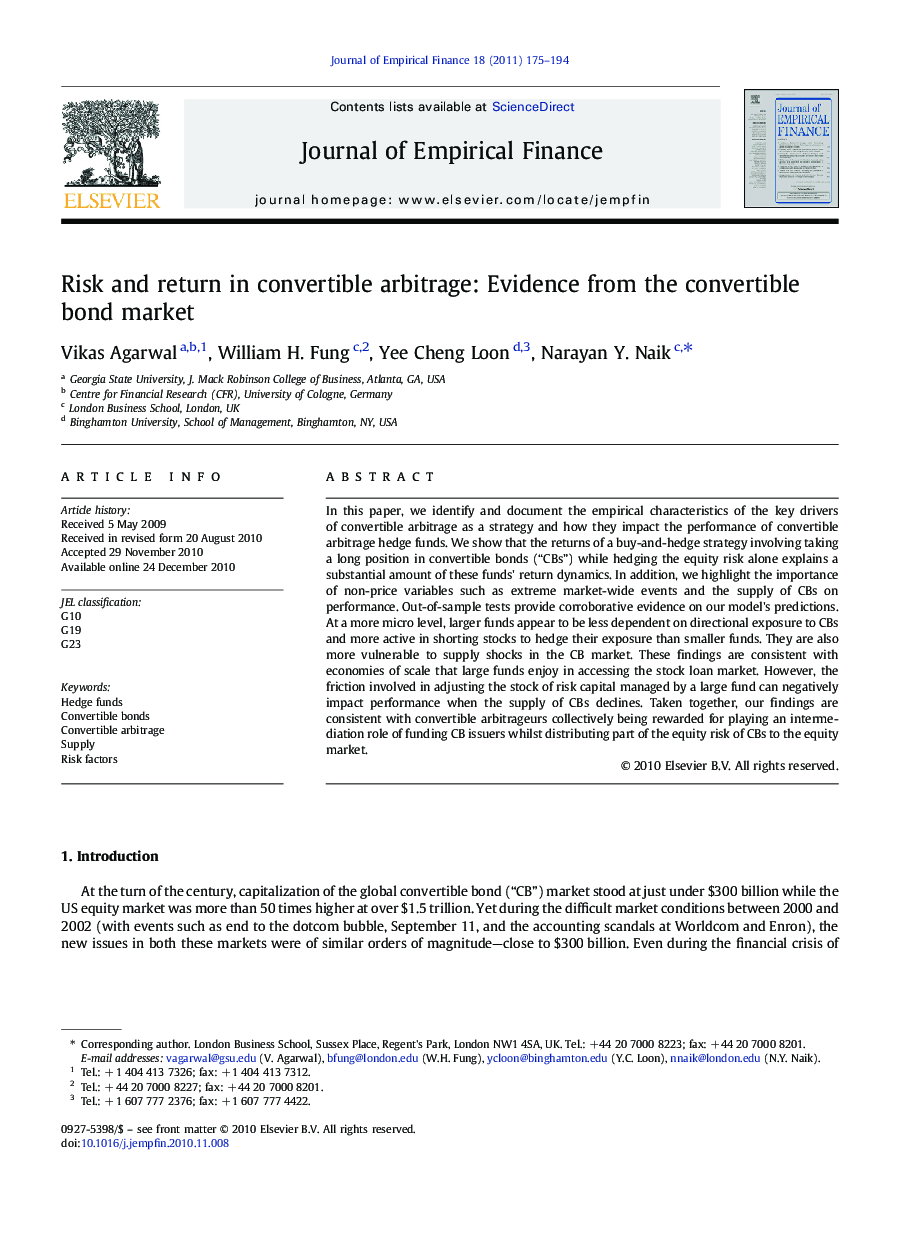| Article ID | Journal | Published Year | Pages | File Type |
|---|---|---|---|---|
| 958838 | Journal of Empirical Finance | 2011 | 20 Pages |
In this paper, we identify and document the empirical characteristics of the key drivers of convertible arbitrage as a strategy and how they impact the performance of convertible arbitrage hedge funds. We show that the returns of a buy-and-hedge strategy involving taking a long position in convertible bonds (“CBs”) while hedging the equity risk alone explains a substantial amount of these funds' return dynamics. In addition, we highlight the importance of non-price variables such as extreme market-wide events and the supply of CBs on performance. Out-of-sample tests provide corroborative evidence on our model's predictions. At a more micro level, larger funds appear to be less dependent on directional exposure to CBs and more active in shorting stocks to hedge their exposure than smaller funds. They are also more vulnerable to supply shocks in the CB market. These findings are consistent with economies of scale that large funds enjoy in accessing the stock loan market. However, the friction involved in adjusting the stock of risk capital managed by a large fund can negatively impact performance when the supply of CBs declines. Taken together, our findings are consistent with convertible arbitrageurs collectively being rewarded for playing an intermediation role of funding CB issuers whilst distributing part of the equity risk of CBs to the equity market.
